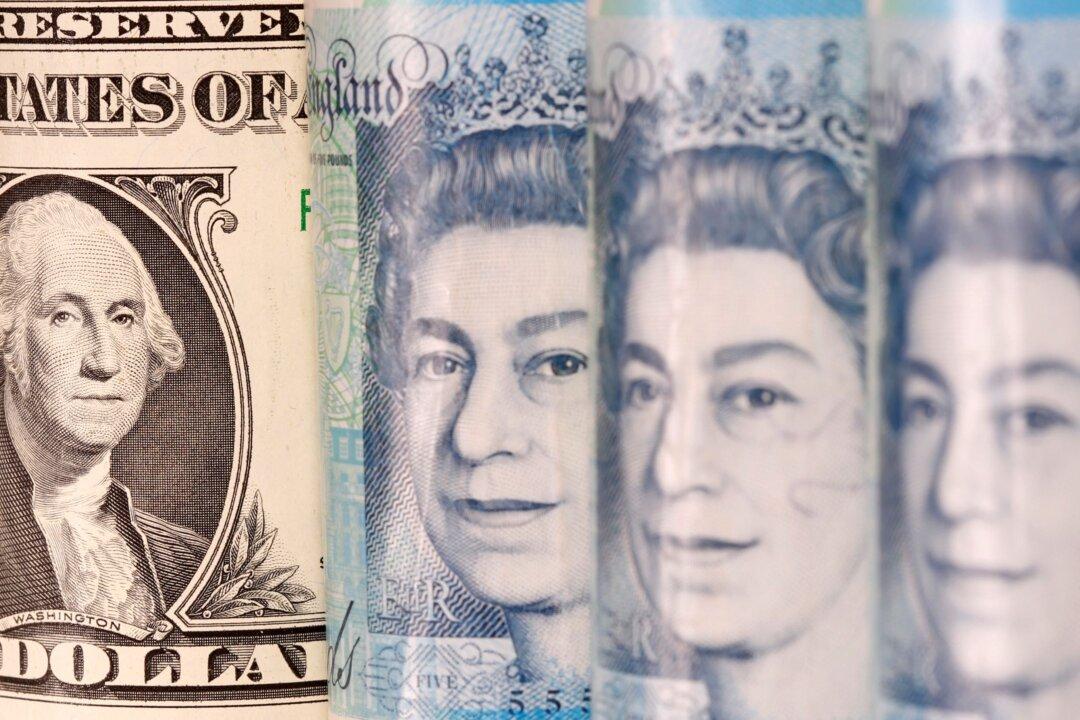LONDON—Sterling tumbled again on Wednesday after the Bank of England (BOE) said it would step in to prop up the gilt market, the latest sign of nerves in financial markets which helped nudge the dollar to its latest two-decade peak.
The BOE said it would buy as many long-dated government bonds as needed between now and Oct. 14 to stabilize financial markets, and added that it would postpone next week’s start of its gilt sale program.





